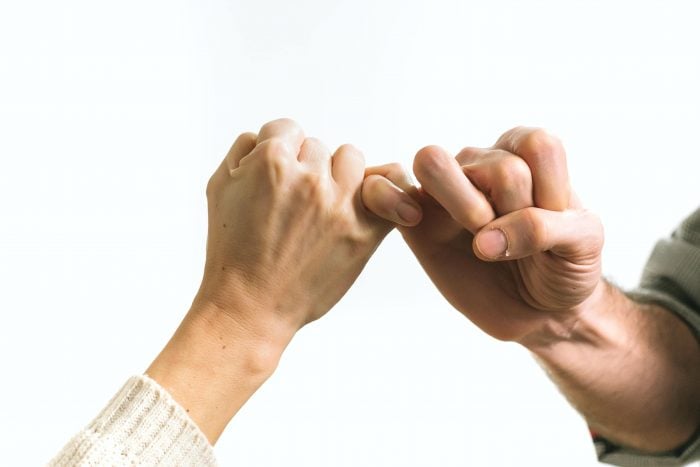Top 10 Chinese Gestures You Absolutely Should Know
A major challenge English speakers face when communicating with Chinese people is body language and hand gestures. Due to cultural differences, what is friendly in Canada can be extremely rude in China. To save yourself some embarrassment, learning some of the most common Chinese hand gestures is an essential part of your language lessons, especially if you plan to visit China in the near future.
No matter your proficiency level, you can emphasize (or even replace) your words with these hand gestures and express yourself more vividly. Let’s take a look at the top 10 Chinese gestures you should learn before you visit China!
Saying Yes
China is similar to the Western world in that they nod when agreeing. However, while businesspeople usually shake hands to seal a deal, this isn’t done in China, where bodily contact between strangers is not considered quite so socially acceptable. Interlocking your last fingers with another is more appropriate, as this hand gesture has an additional meaning: goodwill and a desire for the agreement to be long and fruitful.

This hand gesture also has a similar meaning as in Canada (“pinky promise”) but only between very close friends or between children.
How to Point
Pointing at others can be considered disrespectful in many cultures, but even more so in China. To point at someone with one finger is to show contempt. Fortunately, there are ways to point respectfully:
- At yourself: If you need to identify yourself (including at the office: let’s say someone asks, “Who was in charge of the monthly report?” and you need to show it was you), you can touch your nose with your index finger.

- At others: However, if the person in charge of the monthly report is your partner and you need to point at him, do not touch his nose with your finger! Instead, gesture towards your partner with your whole palm upwards, as in this picture:

Come Here
If you want to summon someone, face your palm downward and move your fingers towards yourself. Bear in mind, you should not use this gesture with anyone, as it’s considered rude. Chinese people will usually only use the “Come Here” hand gesture with people younger than them, children, waiters, or cab drivers.

In case you need to summon an elder or someone in the office with a senior position, you should do a slight bow.
Thank You
Imagine a friend of yours invites you to their home and offers you the most delicious dinner you can imagine. When it comes time to thank them for their hospitality, you can accompany your words with a thank you hand gesture: let the palm of one hand rest on the fist of the other hand and bow slightly.

Wish good luck
Planning to spend New Years’ Eve in China? Then, you should learn the “good luck” hand gesture. This is a respectful way to wish good fortune to elders and superiors at work.

Add the greeting 给您拜年了 (gěi nín bài nián le) and wish them a very Happy New Year!
Numbers
The Chinese hand gestures to indicate numbers are the same as in Canada from one to five, but differ from six to 10. From negotiating with a vendor to counting something at work, knowing how to make these number hand gestures will come in handy.
Six and Seven
The hand gesture for number six is said to mimic its character(六), but there is a much simpler explanation: the thumb represents number five, so you just add one or two numbers to represent six and seven, respectively.

Number 6

Number 7
Number 8
Likewise, the number eight is said to resemble the character 八, so you must position your fingers in a similar way. Incidentally, this gesture is a lot like the “Loser” hand sign in Canada!

Number 10
There are several ways to do the number ten hand gesture. One is to use the index fingers of both hands to form a cross that looks like the number’s Chinese symbol counterpart, 十. Yet, the most common way to indicate the number is to cross your index and middle finger on one hand; the way we do in Canada to wish someone good luck.

This list is by no means exhaustive, but we guarantee that knowledge of these hand gestures will make your life a little bit easier in China (especially if you are traveling for business). Take your time to learn them and, soon, they will become second nature.
Thinking of traveling to other countries around the world where the gestures may be a little different to what we are used to in Canada? Check out the 10 hand gestures you’d better get right!
